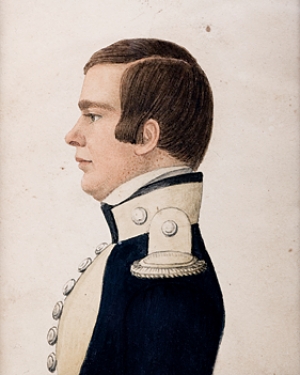
Reconstructing an artist’s oeuvre is always a challenge. Although the miniatures of Rufus Porter (1792–1884) are greatly admired, many questions remain as to how his distinctive style evolved. Fortunately, inscriptions found on backing boards and attached to frames, often referred to as “granny notes” since they were frequently added by elderly relatives, have helped identify more than a dozen individuals who sat for Porter. This information has helped clarify the hallmarks of Porter’s style and proved instrumental for establishing where he traveled and how his approach to miniatures developed over two decades from 1815 until 1835 (Figs. 1 & 2).
Born in West Boxford, Massachusetts, at the age of twelve, Rufus Porter spent six months in studies at the Fryeburg Academy, Fryeburg, Maine. Despite his lack of additional formal education, he would spend his life pushing boundaries—physically, intellectually, and artistically. Beginning in 1807, he was apprenticed as a shoemaker in West Boxford. When that failed to capture his interest, he then played the fife and fiddle in Portland, Maine, before commencing employment as a house and sign painter in the community. With the outbreak of the War of 1812, he then enlisted in the West Boxford militia company stationed in Portland and painted gunboats and served as a musician. In 1814, he did a brief stint as a teacher before his attention was diverted to the designing and building of gristmills.